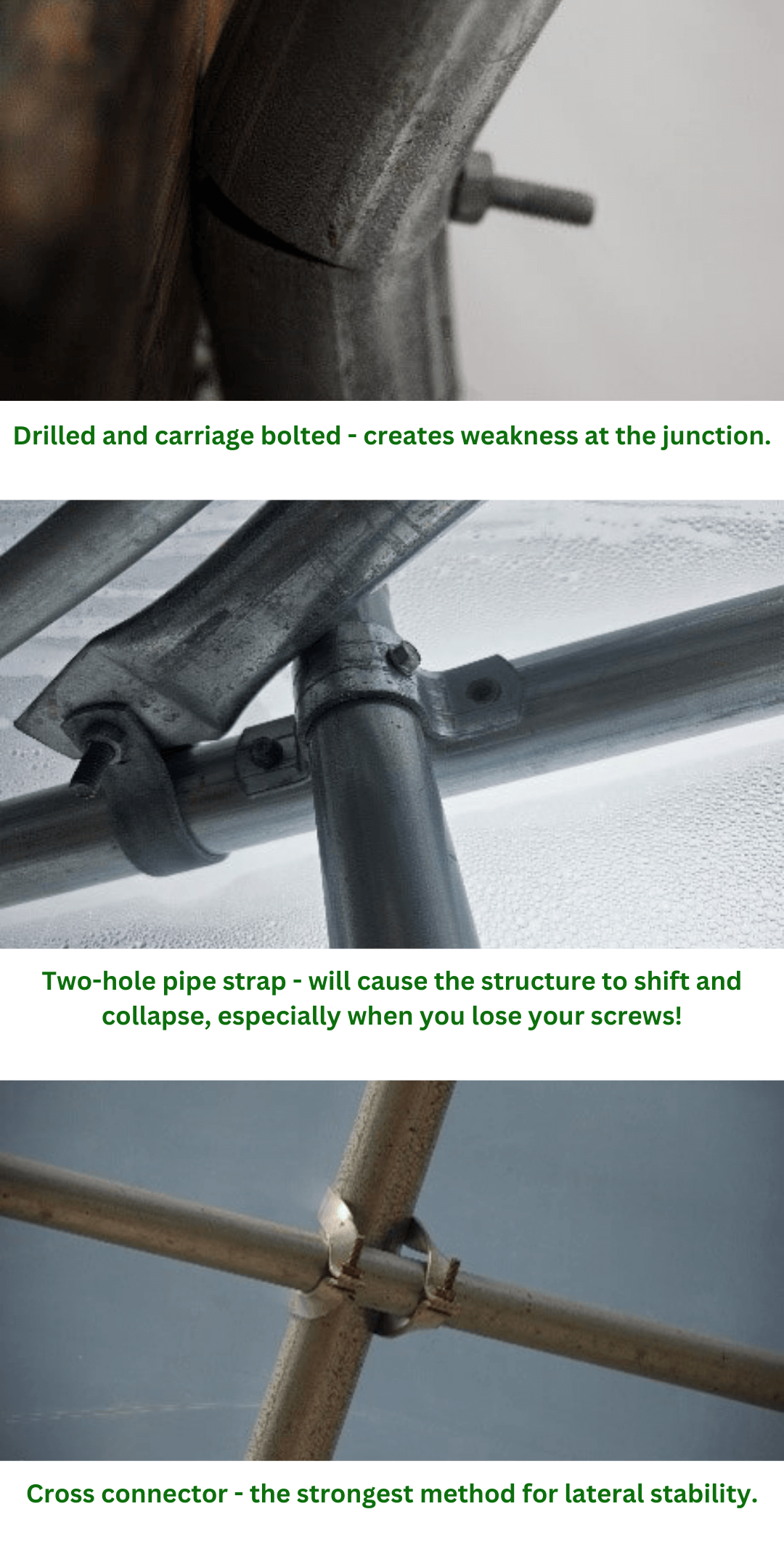The engineering details matter when it comes to high tunnel strength and durability.
As the U.S. continues to face increasingly extreme weather conditions, high tunnels and greenhouses are being tested by intense wind, rain and snow. In fact, International Building Code was recently updated to account for the increased wind and snow loads facing structures as climate risks rise.
A high tunnel is a significant purchase for most businesses, and it is important that it lasts for many seasons to provide a worthwhile return on investment. There are several factors that go into a high tunnel purchasing decision, but one of the most important is how long the structure will last and how it will hold up against harsh weather.
Some seemingly small elements of high tunnel design can have a significant impact on the strength of the structure. Here are some of the engineering and design elements to look for in a high tunnel to ensure that you can stay growing through the worst of what Mother Nature has to offer.
Roof Pitch
Tunnels with steeper roof pitch will hold up better against heavy snow. Look for a 6/12 roof pitch for optimal snow shed . Even one degree less can make a difference. The gothic shape is also better for snow shed, rather than the oval-shaped hoop design.

Bow Design
Consider how the bows on your greenhouse (the arch that creates the width of the tunnel) are engineered. A single piece half-bow will be much stronger than multiple pieces of steel that are tek-screwed at each junction. Each of these junctions creates a potential point of failure for the high tunnel. Rimol Greenhouses are built with a single piece half-bow, connected at the peak by a single-piece ridge connector (see diagram below).

Trusses and Truss Bracing
Look for a structure that has a truss and truss brace on every bow (see diagram above). Some tunnels may have a truss on every other bow, or they do not have trusses at all. This can make your tunnel susceptible to collapse.

Purlin-to-Bow Connection
The method used to connect the purlin (the steel running the length of the tunnel) to the bow is extremely important for wind and snow loads. There are three main methods used by tunnel manufacturers to make that purlin-to-bow connection:
- Drilled and carriage bolted: In this method, the purlin and the bow are both drilled with a hole for a carriage bolt to go through. We often see failures with this method as you are weakening the steel at that jnction. The bow will not have the same strength when material is removed to create that hole.
- Two-hole pipe strap: In this method, the purlin is strapped to the bow using a two-hole pipe strap, secured with tek screws. This is the worst purlin-to-bow connection method that we see for a number of reasons. By drilling holes in the bow to secure the strap, it is weakening the steel, and the tek screws are likely to loosen over time due to the small movements of the frame. This method also does not have the strength to stand up to lateral loads like wind. Since the connection is only made at a very small plane, the two pieces can easily shift and cause the structure to collapse. Lastly, if you would like to hang anything from the purlins, you must rely on those tek screw threads to hold the additional weight – which can be risky!
- Cross connector: In this method, a double-bolted cross connector is used to attach the bow to the purlin. We believe that the cross-connector is superior to the other two methods, as it provides the most lateral stability and leaves the bow and purlin intact so as not to compromise their strength.

Wind Bracing
Your tunnel should be braced against wind on all four corners. Some high tunnel kits may not include wind bracing, or they may include bracing for only two corners. Having the wind bracing on all four corners of the structure will help strengthen it against wind coming from any direction.

Rimol Greenhouses come with wind bracing for all four corners of the structure (two braces per corner). For areas with additional wind risk, you can also add on our high wind kit that provides extra bracing at each end of the structure (see diagram below).

Steel Quality
Not all steel is created equally. Higher quality steel will last longer, especially when faced with heavy precipitation and temperature fluctuations. Look for G90 galvanized steel, which is two-thirds thicker than G60 and specially coated for corrosion resistance, extending the service life. Rimol Greenhouses’ bows are G90 galvanized on the outside, plus they are hot dip galvanized on the inside for outstanding rust prevention for years to come. The hot dip on the inside is rare in the greenhouse industry, as most are either painted or have no coating at all.
As extreme weather increases, so do engineering standards. Be sure to ask your tunnel manufacturer for engineering data around snow/wind loads.
Rimol high tunnels are designed to hold up against the heaviest snow, wind and rain in the U.S. We have engineered our structures to be the strongest on the market. Rimol Greenhouse frames have been load tested and certified for snow and wind load requirements. Rimol structures are built with a single-piece half-bow, and 4’ bow spacing with trusses on every bow as our standard. Wind bracing kits for all four corners are included as part of our greenhouse packages with two braces or more per corner.
Reach out today to learn more about what makes a Rimol Greenhouse the strongest high tunnel on the market, holding up for decades against any weather you might face.

